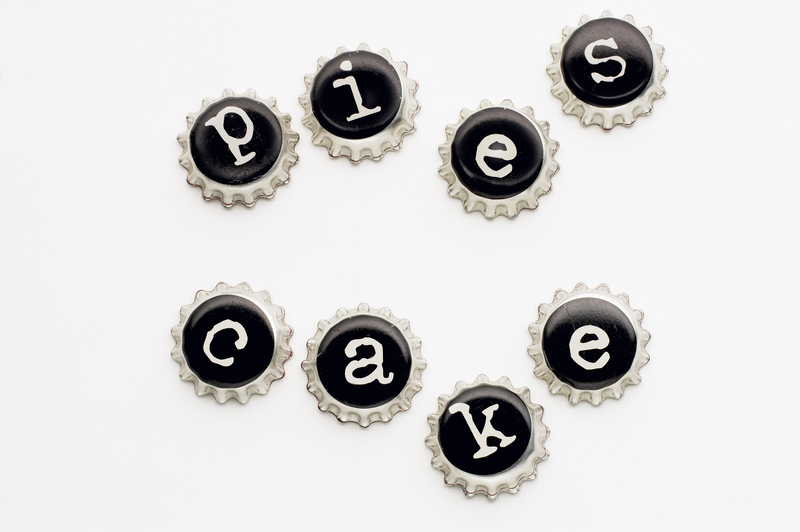Where to Take Damaged Pots and Pans for Recycling
Pots and pans are essential items in any kitchen, but eventually, they wear out and become damaged beyond repair. Instead of throwing them in the trash, did you know you can recycle many types of cookware? Knowing where to take damaged pots and pans for recycling helps reduce landfill waste and promotes a more sustainable lifestyle. This comprehensive guide will walk you through various options for recycling old cookware, offer tips on preparing your pans for recycling, and explain why recycling is crucial for our environment.
Why Recycle Damaged Pots and Pans?
Many people wonder why it's important to recycle old pots and pans instead of tossing them in the garbage. Here are a few compelling reasons:
- Reduce Landfill Waste: Cookware is often made from materials like metal, which do not decompose easily.
- Conserve Resources: Recycling metals conserves raw materials and saves the energy needed to extract and manufacture new materials.
- Lower Environmental Impact: Reusing and recycling reduce pollution and greenhouse gas emissions caused by manufacturing.
With these benefits in mind, let's explore where to bring your damaged pots and pans for recycling and how to do it efficiently.

Common Materials in Pots and Pans & Their Recyclability
Before you start searching for recycling locations for damaged cookware, it's helpful to understand what materials your pots and pans are made from:
- Aluminum: Lightweight and often used for saucepans, frying pans, and baking trays. Aluminum is widely recycled.
- Stainless Steel: Durable, rust-resistant, and also largely recyclable.
- Copper: Found in specialty cookware, recyclable but less common in household recycling.
- Nonstick Coatings (Teflon, Ceramic): These can complicate recycling but do not necessarily prevent it.
- Cast Iron: Very recyclable, though extremely heavy.
- Enamel or Glass: Not typically recyclable with metals, but may have specialized recycling streams.
Tip: If your damaged cookware contains plastic handles or glass lids, separate these materials if possible to make recycling easier.
Best Places to Take Damaged Pots and Pans for Recycling
When searching for where to take broken pots and pans for recycling, you have several convenient options to choose from:
1. Local Scrap Yards and Metal Recyclers
Most towns and cities have scrap metal yards or scrap dealers that accept a wide range of metal household goods, including cookware. Here's what you should know:
- Accepted Items: Aluminum, stainless steel, cast iron, and copper pots and pans without plastic or glass attached.
- Preparation: Remove non-metal parts (like handles, knobs, lids) and rinse off any significant grease or food residue.
- Finding Locations: Search online for "scrap metal recycling near me" or use apps like iScrap App.
Scrap yards might even pay you a small amount for certain types of metals!
2. Municipal Recycling Centers (Household Waste Sites)
Many local councils and municipalities operate recycling centers or household waste sites where you can dispose of a wide variety of items. Often, these sites accept old pots and pans for recycling alongside other metal goods.
- Check your city or county website for accepted materials and take note of their operating hours.
- Some sites have specific bins for different metals; ask staff for guidance if you're unsure where to deposit your items.
These centers ensure your metal cookware is processed correctly and can help with questions about separating materials.
3. Specialty Kitchenware Retailers
A growing number of kitchenware retailers and cookware brands now offer recycling or take-back programs for damaged or used cookware. Some notable examples include:
- Crate & Barrel: Occasionally runs recycling drives for old cookware.
- Bed Bath & Beyond: Some locations offer recycling options for certain cookware types.
- GreenPan: Offers a "Recycle My Pan" program for their old products.
- Le Creuset: Some outlets accept trade-ins for damaged enamel cookware.
These stores may offer discounts or perks for turning in your old items, making it both eco-friendly and budget-friendly.
4. Manufacturer Mail-Back or Take-Back Programs
Many major kitchen brands are committed to sustainability and provide mail-back programs for recycling their used products. Check the website of your cookware's brand -- several offer guidance on how to return damaged pots and pans for recycling.
- Follow instructions for cleaning and packing your cookware.
- Some programs provide prepaid shipping labels to make the process easier.
These programs ensure cookware is recycled responsibly and sometimes even offer credits toward new purchases.
5. Local Community Recycling Events
From time to time, many towns and neighborhoods hold special recycling days or e-waste and scrap metal collections. These events may be ideal if you have larger quantities or unusual items. Find out about upcoming events by:
- Checking your local government or environmental group's website.
- Looking for community bulletin boards or news outlets.
Bring your broken kitchenware for recycling and ask organizers about proper disposal methods.
6. Donation and Reuse Centers (If Gently Used)
If your pots and pans are damaged but could still be fixed or reused (for example, minor scratches or removable stains), consider donating to:
- Thrift stores (like Goodwill or Salvation Army)
- Community centers or shelters
- Local art studios (sometimes use old pans for creative projects)
Note: Donation should only be considered if the cookware is in safe, usable condition.
7. Curbside Recycling (With Caution!)
In some areas, you can place metal cookware in your household curbside recycling bin. However, check with your local recycling provider before doing so! Not all municipalities accept pots and pans in curbside bins due to size restrictions and material requirements.
- Check guidelines regarding pots and pans made of mixed materials (e.g., metal with plastic handles).
- Never recycle nonstick-coated pans curbside unless specifically allowed, since coatings may contaminate recycling streams.
When in doubt, use a specialized recycling center or scrap yard for proper disposal.
How to Prepare Damaged Pots and Pans for Recycling
Proper preparation ensures your damaged cookware is accepted at recycling facilities and processed efficiently.
1. Remove Non-Metal Parts
Detach plastic or wooden handles, rubber grips, and glass lids from your pots and pans. Most recycling centers only accept metal parts. Use a screwdriver or pliers if needed.
2. Clean Thoroughly
Wash off all food residues and grease. Although pristine cleanliness isn't required, reducing food contamination makes recycling easier and more hygienic.
3. Separate by Material
If you're recycling a mix of metals -- for instance, stainless steel and aluminum pans -- separate them, as some facilities process metals individually.
4. Group by Coating/Common Issues
If you have nonstick pans or those with ceramic coatings, inform the recycling facility staff, as these may require different handling.
Recycling Challenges and Special Considerations
Though recycling old cookware is generally straightforward, some issues may arise:
- Nonstick and Teflon Coatings: Pans with Teflon or other nonstick surfaces often can't go in regular metal recycling streams. They may need specialized recycling programs or should be sent to facilities capable of handling them.
- Antique or Decorative Pans: Collectors may value old or antique cookware; check with local stores or online marketplaces before recycling valuable pieces.
- Mixed Materials: Some cookware has layers of different metals (like copper-bottom pans) or combined materials. Most scrap yards accept them, but be ready to answer questions about composition.
Alternative Ways to Reuse Old Pots and Pans
If your pans are not suitable for recycling, why not consider upcycling them for other purposes? Here are some creative ideas:
- Planters: Use old pots as quirky garden planters for herbs or flowers.
- Storage: Repurpose pans to organize tools, crafts, or office supplies.
- Wall Art: Turn decorative or antique pans into rustic kitchen wall decor.
- Pet Dishes: Clean up old pans and use them as food or water bowls for pets.
Environmental Impact of Pots and Pans Recycling
Recycling cookware isn't just about clearing out kitchen clutter -- it has a major positive impact on the planet. Consider these facts:
- Metal recycling saves up to 95% of the energy required to produce new metals from ore.
- Mining for new metals generates significant environmental destruction and pollution.
- Recycling helps prevent the build-up of non-biodegradable materials in landfills.
- Most metal in cookware can be recycled repeatedly without degrading its quality.
So, by selecting the right place to recycle your damaged baking trays, pots, and pans, you're making a small but meaningful contribution to sustainability.

Frequently Asked Questions About Recycling Pots and Pans
Can Nonstick Pans Be Recycled?
It depends on your local recycling facility. Some require the removal of nonstick coatings, while others accept them if they are properly cleaned and sorted. Always ask your recycling center for specific guidelines on nonstick cookware.
Can I Recycle Cookware with Plastic Handles?
Usually, you must remove plastic or wood elements before recycling. Some centers have the ability to separate these materials, but most only accept the metal portion.
Can Glass Lids Be Recycled with Metal Pots?
No. Glass typically follows a different recycling stream. Remove and recycle glass lids with your glass recycling (if accepted), or dispose of them according to local glass disposal regulations.
Are Enamel-Coated Pans Recyclable?
Enamel coating complicates recycling, but many scrap yards still take these pots and pans. Ask your local scrap yard for advice or check with the manufacturer for disposal options.
Is It Worth It to Donate Damaged Cookware?
Only donate pans if they're still safe to use and not excessively damaged. Minor scratches may be acceptable, but peeling nonstick coatings or significant structural damage makes cookware unsafe and unsuitable for donation.
Conclusion: Making a Difference, Pan by Pan
Tossing your pots and pans in the trash should always be your last resort. With plenty of options for responsible disposal, from scrap metal yards and recycling centers to retail take-back programs, recycling damaged pots and pans is easy and impactful. By taking the time to recycle old and broken cookware, you contribute to resource conservation and a cleaner planet for future generations.
Next time your favorite skillet or sauce pot reaches the end of its life, remember this guide on where to take damaged pots and pans for recycling and help create a more sustainable kitchen and world.
Did you recently recycle your old cookware? Share your experience and tips with others in the comments below! Your story could inspire others to make eco-friendly choices, one pan at a time.